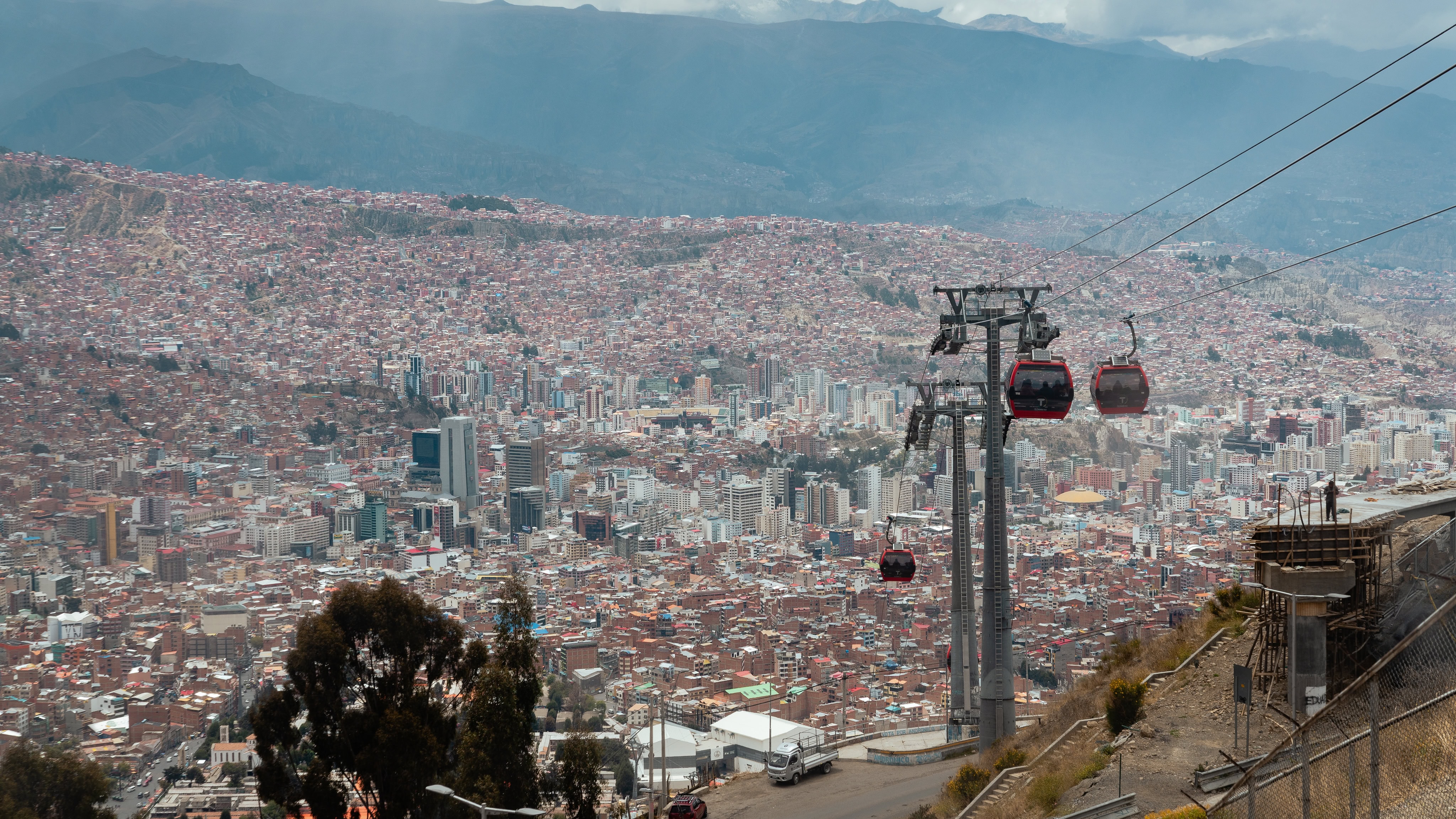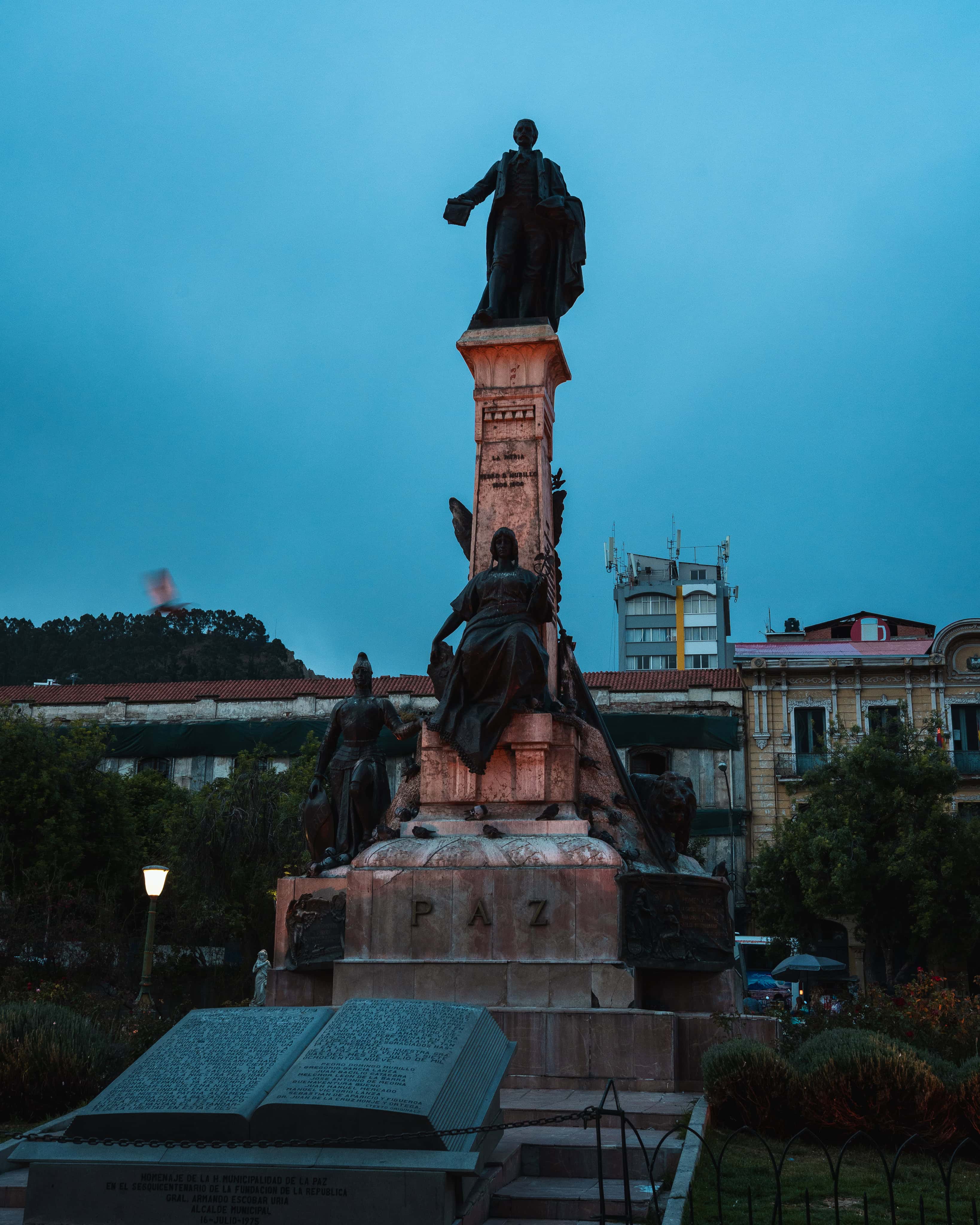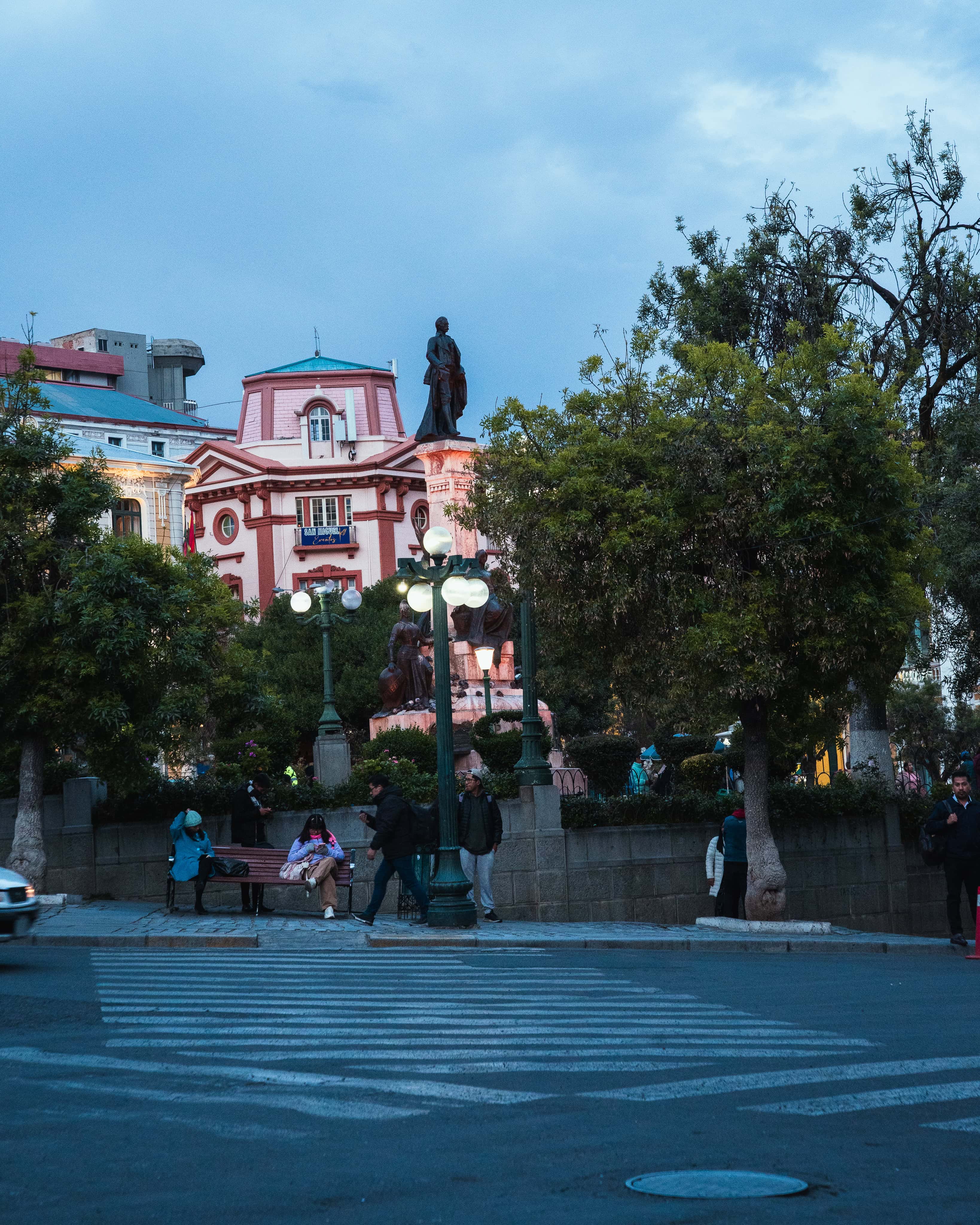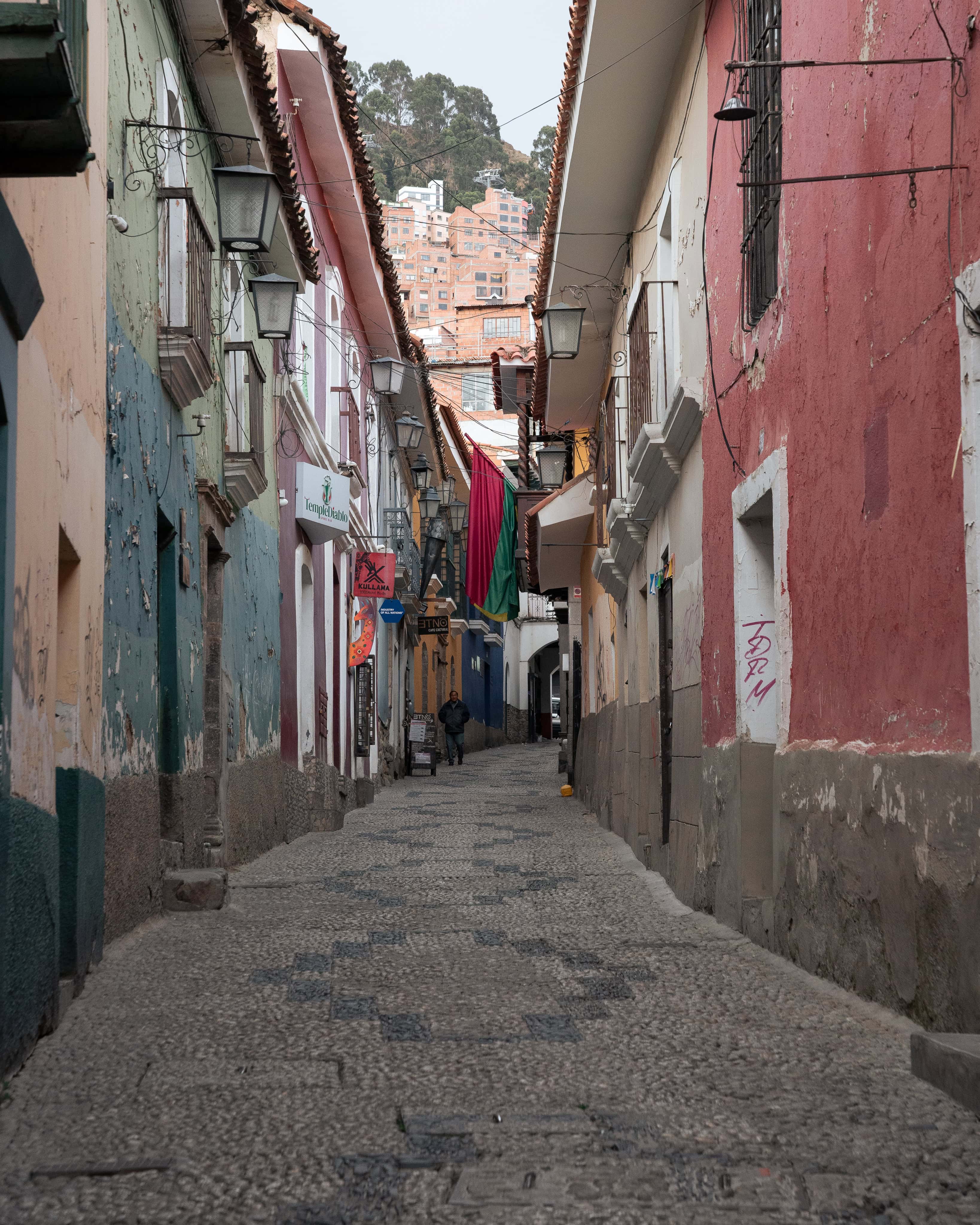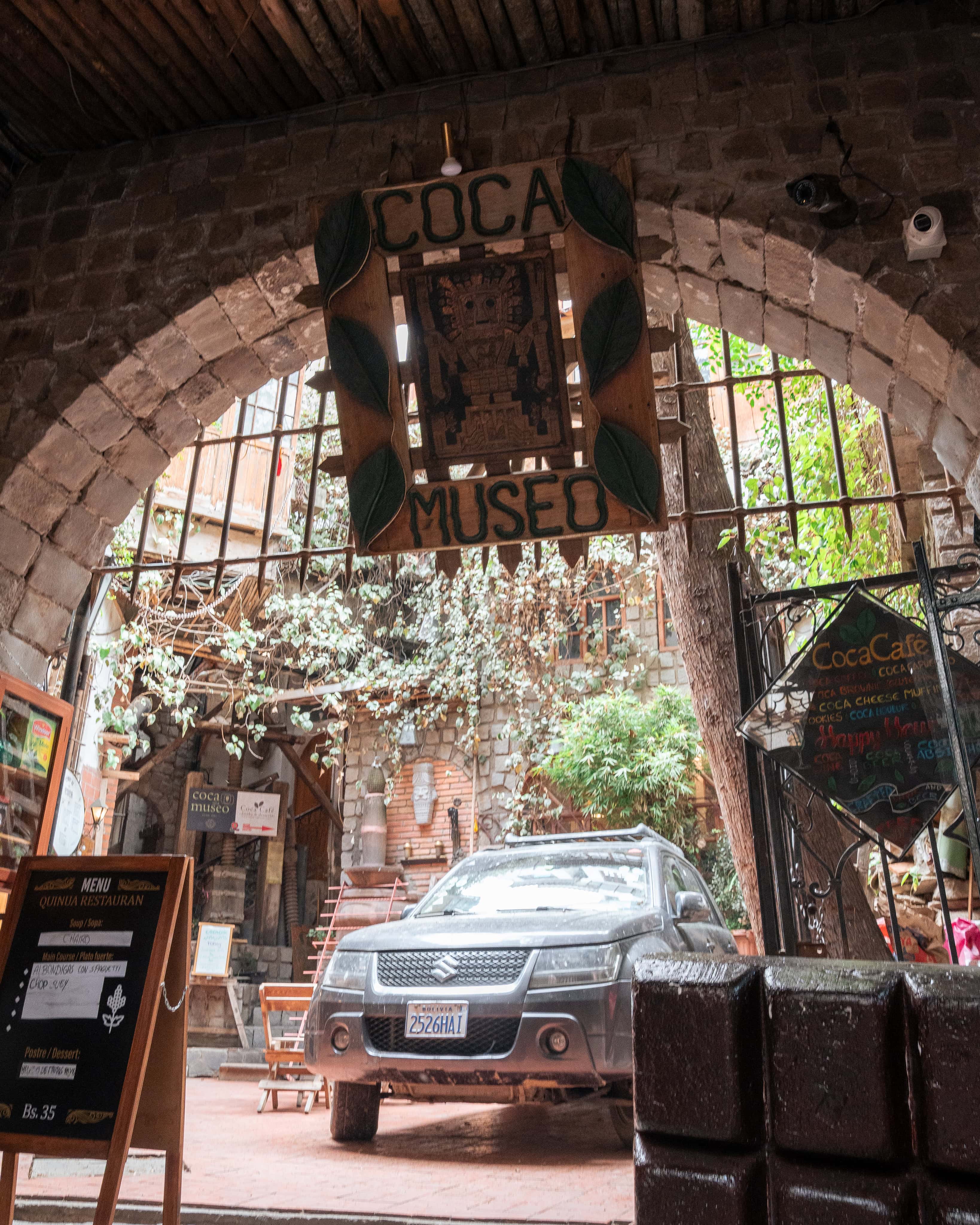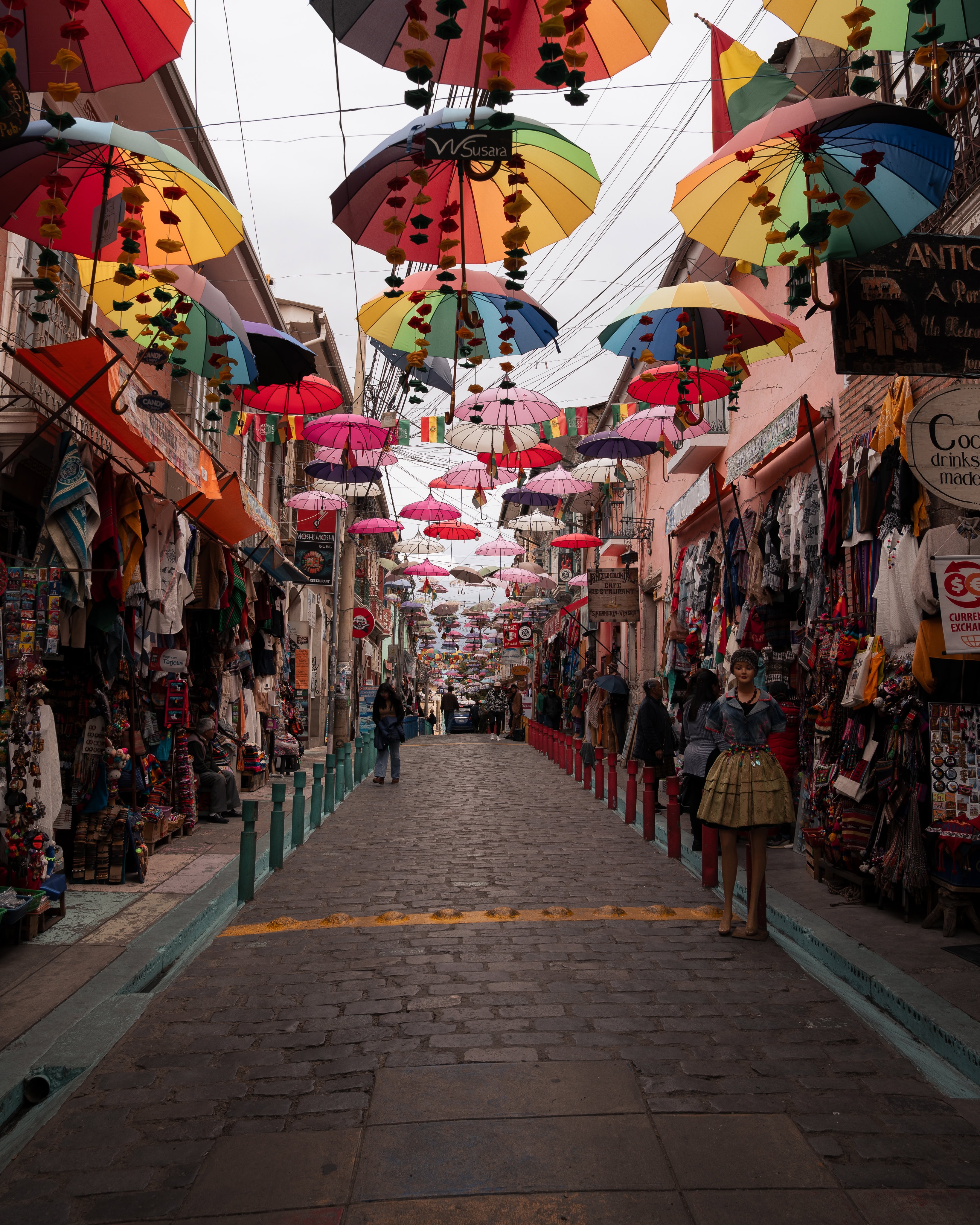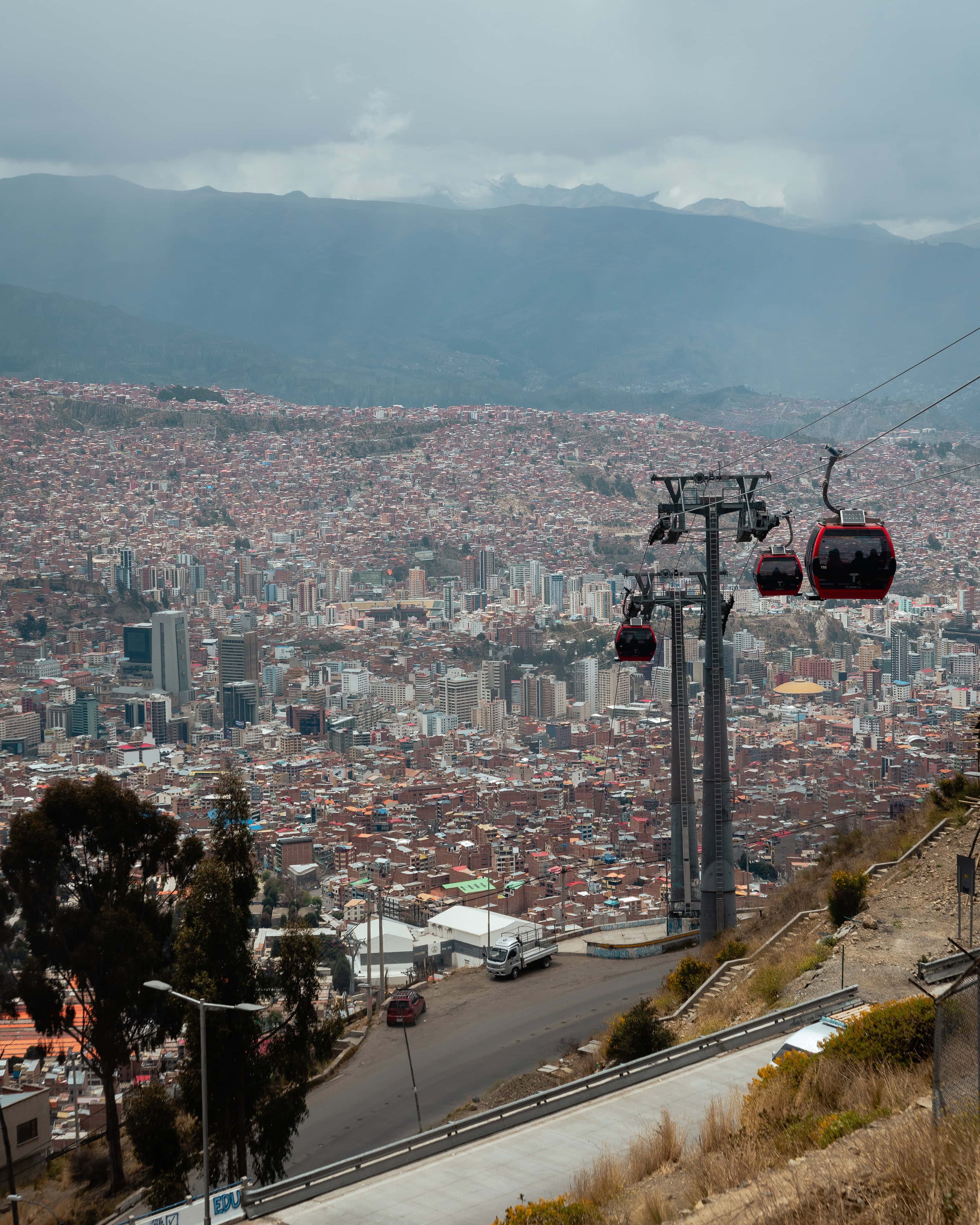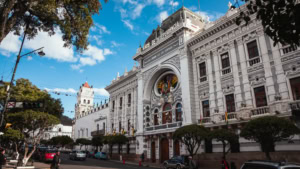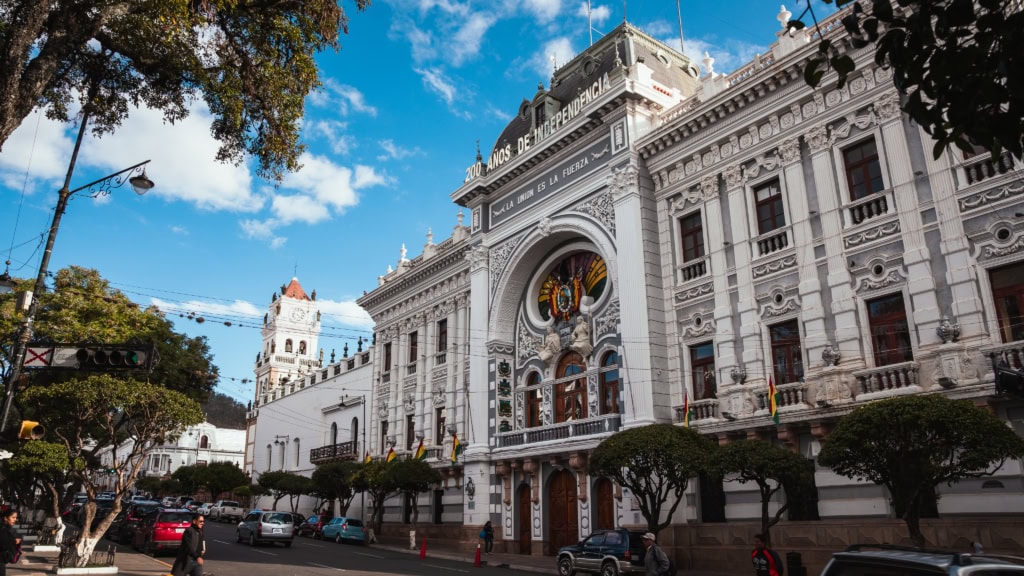La Paz is a vibrant mix of steep alleys, colourful markets and colossal Andean panoramas, not to mention a surprisingly young and creative restaurant scene. The city appears to be nestled in a deep valley. The city centre, with its colonial buildings and narrow streets, lies in a canyon-like basin. Meanwhile, the larger, more densely populated district of El Alto sits on the high plateau above. For travellers, this means breathtaking views and cultural depth, as well as the need to be mindful of the altitude and take the time to acclimatise.
Location, altitude and getting there: What you need to know
La Paz is located in a deeply carved valley on the western side of Bolivia. Depending on its location, the city centre lies between approximately 3,250 and 4,100 metres above sea level, making La Paz one of the highest administrative capitals in the world. International flights arrive at El Alto Airport, which is located above the city at an altitude of around 4,000 metres, making it one of the highest international airports in the world. Many flights land at El Alto, and passengers then continue their journey into the city by taxi, transfer or cable car.
Important health information: La Paz is located at a high altitude, so there is a real risk of acute altitude sickness. Health authorities recommend slow acclimatisation, drinking plenty of fluids, and avoiding alcohol for the first 48 hours. Anyone flying directly to La Paz from lower altitudes should allow at least one or two days for rest before undertaking any strenuous activities. Symptoms such as severe headaches, nausea, shortness of breath at rest or confusion require immediate descent and medical attention.
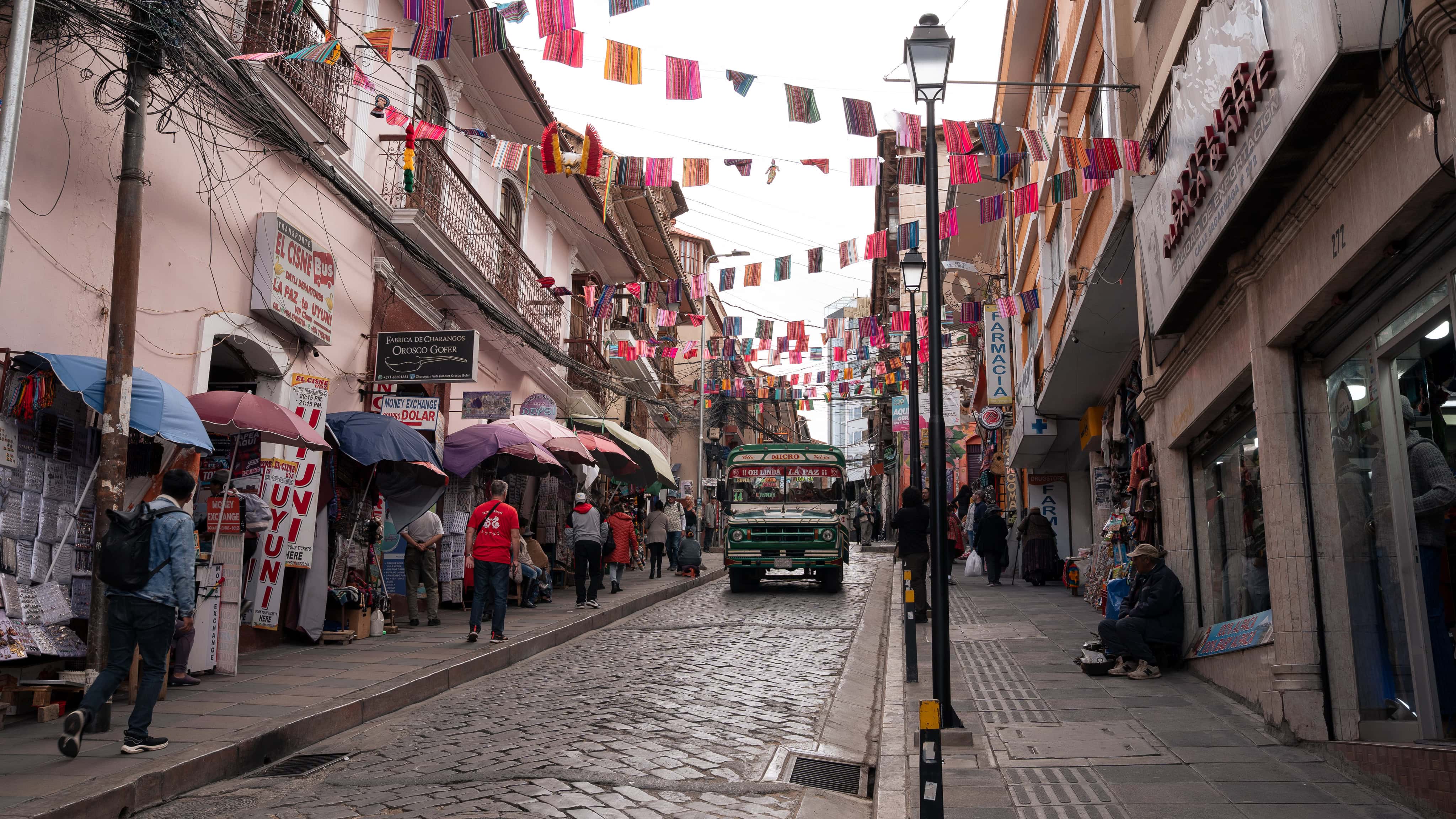
A brief history: From colonial settlement to modern metropolis
Founded on 20 October 1548 as Nuestra Señora de La Paz, La Paz was established by Spanish colonisers on a site already occupied by indigenous communities, in order to connect trade routes between the silver mines (notably in Potosí) and the coast. Over the centuries, La Paz developed into a political and economic centre characterised by colonial architecture, indigenous traditions (such as Aymara and Quechua culture), and modern urban upheavals that continue to shape the city today. Visitors will see these layers of history at every turn, with colonial-era squares, administrative buildings and churches standing alongside vibrant markets and new urban projects.
Sights: Must-sees and insider tips
La Paz has many highlights and the city and its surroundings can easily be divided into areas for separate exploration: the city centre and old town, the markets, the viewpoints, and the bizarre lunar landscapes near the city.
Plaza Murillo & historic city centre
Not only is Plaza Murillo the political centre, home to the government palace, cathedral and parliament building, it is also a lively meeting place for locals, street artists and traders. Here, you can particularly intensely feel the heartbeat of the city. The plaza is also of historical importance as it has been the site of numerous political events and demonstrations that have had a lasting impact on Bolivian history.
Death Road (Yungas Road)
The legendary Camino de la Muerte is considered one of the most spectacular but also most dangerous roads in the world. Today, it is primarily a popular destination for adventure seekers who ride their mountain bikes around 60 kilometres from the cold Andean air of La Paz down to tropical Coroico.
Calle Jaén and the City Museum
Considered one of the most picturesque streets in La Paz, Calle Jaén boasts colourful colonial houses, cobbled paths and small balconies that evoke a bygone era. Several museums are located along the street, including the Museo del Oro, the Museo de Instrumentos Musicales and the Museo de Metales Preciosos. These museums offer a deep insight into Bolivia’s cultural heritage. As you wander through the historic buildings, you can sense the connection between history and the present, with small galleries, craft shops and cosy cafés nestled amongst them.
Museo de la Coca
This small but informative museum is dedicated to the history and cultural significance of the coca plant. Visitors can learn about its traditional uses, social and economic role, and the globally controversial aspects of the plant. The museum also vividly illustrates how the coca plant has shaped daily life in the Andes for centuries, and highlights the misunderstandings surrounding its use in the international discourse.
Mercado de las Brujas (Witches’ Market)
This fascinating market, located in the old town around Calle Linares and adjacent streets, is a popular photography spot. Here, Aymara women (chulitas) sell traditional medicinal plants, amulets, dried llama foetuses, and ritual items. The market offers visitors a cultural insight into Andean spirituality, and respectful behaviour and questions to the sellers are recommended.
El Alto Markt (Feria de 16 de Julio)
Every Thursday and Sunday, one of South America’s largest markets takes place in El Alto. From clothing and electronics to animals and traditional handicrafts, you can find everything here. The market provides an authentic insight into the everyday life of the local population.
Mi Teleférico – The cable car as urban transport
Mi Teleférico has transformed La Paz and El Alto by providing an urban gondola system that connects the districts and offers unique views of the valley. The network now comprises several lines and dozens of stations, making it ideal for quickly overcoming differences in altitude and getting an overview of the city. The rides are practical and spectacular for tourists alike.
Kili Kili Mirador
One of the best viewpoints in the city. From here, you can enjoy a panoramic view of La Paz’s entire valley, with its nestled houses stretching all the way to the snow-capped peaks of Illimani. This is an unforgettable sight, especially at sunset.
Cholita Wrestling
An extraordinary cultural event that takes place every Sunday in El Alto. Here, indigenous Aymara women, known as ‘cholitas’, compete against each other in traditional dress and bowler hats in a spectacular wrestling show. The mixture of athletic acrobatics, theatricality and humour has made the shows famous far beyond Bolivia.
Valle de la Luna (Moon Valley)
About 10 km outside the city centre lies this bizarre, eroded landscape of pointed clay towers and lunar-like paths, which are particularly atmospheric in the morning or evening. Be sure to wear good shoes and sun protection!
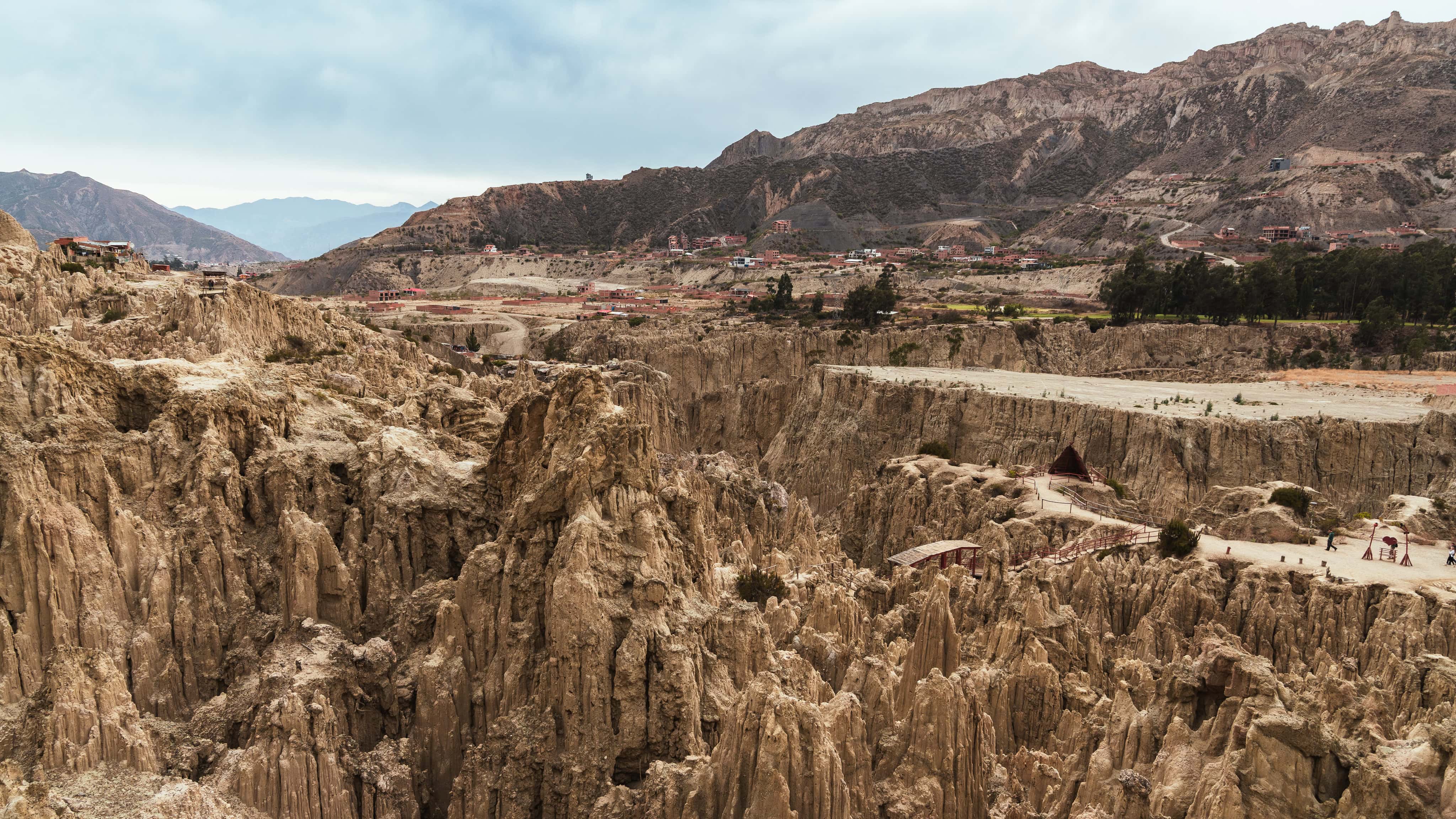
Valle de las Ánimas (Valley of Souls)
A scenic highlight outside the city. Its pointed rock formations, deep valleys and spectacular hiking trails make it a must-visit for nature and tranquillity lovers. It is best reached with a local guide or organised transport.
Food & drink: From street food to fine dining
In recent years, La Paz’s gastronomy has attracted international attention: traditional dishes have been reinterpreted and top restaurants such as Gustu have raised the city’s culinary profile. Meanwhile, a vibrant street food scene has emerged, offering fried specialities, soups, and regional classics such as salteñas, anticuchos, and sopa de maní.
Recommended addresses and neighbourhoods:
- Bolivian Popular Food: a popular restaurant serving modern interpretations of classic dishes. Here, Bolivian ingredients are creatively combined without losing their authentic flavour.
- Café del Mundo: meeting place for travellers from all over the world. The menu ranges from international breakfasts to vegetarian dishes, all served with good coffee in a relaxed atmosphere.
- The Carrot Tree: known for its fresh, healthy cuisine, with many vegetarian and vegan options. Its sunny terrace, which overlooks the city, is particularly popular for its bowls and smoothies.
- The Lucky Llama: a charming café and restaurant with a cosy atmosphere, excellent coffee and regional dishes — perfect for a break after a day in the mountain air.
- Sopocachi district: the creative centre of La Paz, home to numerous small bistros, bars and cafés. It is ideal for strolling through the streets in the evening and discovering local specialities.
- Street food and markets: For authentic flavours.
Practical tips: Travel, money, safety and climate
- Travel and luggage: Flights land in El Alto (LPB). Due to the thin air, special rules apply to aircraft performance, but these rarely affect travellers. However, luggage and connections may be subject to stricter controls.
- Money & prices: The local currency is the Boliviano (BOB); credit cards are accepted in many restaurants and hotels, but not usually in local markets. There are plenty of ATMs in the city, but be careful when making withdrawals at night.
- Safety: Like many large cities, La Paz is affected by pickpocketing. In tourist areas, the usual precautions are recommended: leave valuables in the hotel safe, keep bags closed and be careful in crowds. For journeys outside busy areas at night, it is better to use registered taxis or app services. (Check the latest safety information; embassies and ministries provide region-specific information.)
- Climate & clothing: La Paz experiences wide fluctuations in day/night temperatures. Sun protection is essential due to UV radiation at high altitudes, as are warm layers for the evening and morning. The rainy season is typically between December and March, when roads can become muddy.
- Communication & language: Spanish is the everyday language, with Aymara and Quechua also spoken in many areas. Knowing some Spanish makes everyday life easier, but tourist areas often have staff who speak English.
La Paz is a city of extremes. Located at a dizzying altitude, it is characterised by the spectacular interplay of its colonial past, indigenous traditions, and modern urbanity. Visitors will find a fascinating array of markets, museums, natural wonders and futuristic transport solutions, such as Mi Teleférico.
Anyone visiting La Paz should allow time to acclimatise, as this will enable them to truly enjoy the city. With the right preparation, your stay will be a unique experience, combining high-altitude air, cultural diversity, and a surprisingly modern dynamism – an unforgettable trip.

